Hey there, fellow food explorers! We’re starting a tasty journey through vegan ingredients. This guide is perfect for both seasoned vegans and newcomers to plant-based eating. We’ll show you how to stock a vegan pantry with everything from grains to nuts1.
And the best part? Most of these ingredients are simple to find and great for quick, delicious meals1. So, grab your reusable bags and let’s explore the vibrant world of vegan ingredients together!
Key Takeaways
- Explore a wide variety of common vegan pantry staples, from oats and beans to nut butters and spices.
- Discover the importance of these ingredients in vegan cooking and their versatility in creating balanced meals.
- Learn about the availability of various vegan brands and products, ensuring a diverse market for plant-based alternatives.
- Understand the practical approach to vegan cooking, including efficient meal prep and time-saving strategies.
- Dive into the world of vegan baking and the key ingredients that make it possible to satisfy your sweet tooth.
Introduction to Vegan Ingredients
Welcome to the world of vegan ingredients! It’s key to know what makes an ingredient vegan. A vegan diet doesn’t include animal products like meat, eggs, or dairy2. This means no gelatin in our treats2. Also, some natural flavors come from animals, so always check labels2.
What Makes Ingredients Vegan?
Vegan ingredients come from plants like fruits, grains, and nuts2. Tofu, beans, and nuts are great vegan protein sources2. We also have non-dairy milks and egg replacers like flaxseeds2.
Importance of Understanding Vegan Ingredients
Knowing vegan ingredients helps us make healthy meals and avoid animal products2. While only of Americans are vegan, the UK has seen a big increase in vegans3. Being vegan can be for many reasons, like health or animal welfare. Knowing about vegan ingredients lets us make choices that match our values2.
Let’s start exploring plant-based options for tasty, healthy meals. We’ll discover how to make food that’s good for us and the planet. Get ready to get creative in the kitchen with vegan ingredients!
Plant-Based Proteins
As vegans, we know protein is key for our bodies. Luckily, plants offer great vegan protein sources for our active lives. Let’s explore some top vegan protein options.
Legumes: Beans and Lentils
Legumes like beans and lentils are protein powerhouses. Lentils have 18 grams of protein per cooked cup, perfect for stews and salads4. Most beans give about 15 grams of protein per cooked cup, along with complex carbs and fiber4. From black beans to chickpeas, these legumes are protein-packed.
Nuts and Seeds
Nuts and seeds are great for plant-based protein. Peanuts have 20.5 grams of protein per half-cup5, while almonds offer 16.5 grams5. Chia seeds and hemp seeds are protein stars, with 2 grams and 5 grams per tablespoon, respectively5. Sprinkle these on salads or enjoy as a snack.
Tofu and Tempeh
Soy products like tofu and tempeh are loved for their protein and versatility. Tofu has about 10 grams of protein per half-cup5, while tempeh has around 15 grams per half-cup5. These soy foods are not just high in protein but also have all essential amino acids. Use tofu in stir-fries or grill tempeh sandwiches for a protein boost.
| Vegan Protein Source | Protein Content |
|---|---|
| Seitan | 25 g per 3.5 oz4 |
| Tofu, Tempeh, Edamame | 12-20 g per 3.5 oz4 |
| Lentils | 18 g per cooked cup4 |
| Beans | 15 g per cooked cup4 |
| Nutritional Yeast | 8 g per 1/2 oz4 |
| Spelt and Teff | 10-11 g per cooked cup4 |
| Hemp Seeds | 9 g per 3 tbsp4 |
| Green Peas | 9 g per cooked cup4 |
| Spirulina | 8 g per 2 tbsp4 |
| Amaranth and Quinoa | 8-9 g per cooked cup4 |
| Ezekiel Bread | 8 g per 2 slices4 |
| Soy Milk | 6 g per cup4 |
With many plant-based protein options, getting the nutrients we need is easy. Whether you want crunchy nuts, hearty legumes, or versatile soy products, the vegan protein world is vast. Enjoy exploring!
“Protein power, vegan style! Legumes, nuts, and soy products are all fantastic sources of plant-based protein to keep you fueled and feeling your best.
Let’s get creative in the kitchen and explore vegan protein sources. Your taste buds and body will thank you!
Whole Grains in Vegan Diets
Whole grains are key in vegan food, full of nutrients and easy to use in many dishes. From quinoa to barley, they are rich in fiber, protein, and vitamins6.
Popular Whole Grains
Quinoa is a favorite for its soft texture and mild taste. Brown rice and farro offer a chewy, nutty flavor. Oats, whether rolled or steel-cut, are great for porridge and more7.
Gluten-Free Alternatives
For those avoiding gluten, there are many choices. Millet is light and fluffy. Buckwheat, despite its name, is gluten-free and adds a nutty taste. The rice family, from basmati to wild rice, is also versatile7.
Cooking Tips for Grains
To get the most from whole grains, use the right cooking methods. Toasting them before cooking can bring out their flavor. Always rinse them well. Follow the package instructions for cooking time, and try different methods like the absorption method or pilaf technique. With practice, you’ll master cooking grains6!
| Whole Grain | Cooking Method | Approximate Cooking Time |
|---|---|---|
| Quinoa | Boil in water or broth | 12-15 minutes |
| Brown Rice | Simmer in water or broth | 45-50 minutes |
| Farro | Boil in water or broth | 20-30 minutes |
| Millet | Simmer in water or broth | 15-20 minutes |
“A well-planned vegan diet is appropriate for all stages of life, including pregnancy, infancy, childhood, and adolescence.” – Academy of Nutrition and Dietetics7
Fruits and Vegetables
As vegans, we know that fruits and vegetables are the cornerstone of a nourishing diet. Embracing the seasonal bounty is key – think crisp apples in fall and juicy berries in summer8. Don’t forget to load up on leafy greens and cruciferous veggies like broccoli and cauliflower, which are packed with essential vitamins and minerals. And when it comes to superfoods, we’re all about kale, blueberries, and acai berries for that extra nutritional boost9.
Seasonal Vegetables to Incorporate
- Asparagus in spring
- Tomatoes in summer
- Butternut squash in fall
- Brussels sprouts in winter
Superfoods for Vegans
- Kale
- Blueberries
- Chia seeds
- Avocado
- Quinoa
Tips for Picking Fresh Produce
When shopping for vegan produce, look for vibrant colors and firm textures10. The fresher your fruits and veggies, the more delicious (and nutritious) your meals will be8. Remember to read labels carefully and opt for organic when possible to ensure the highest quality and avoid any hidden non-vegan ingredients9.
Eating a plant-based diet rich in fruits and vegetables is one of the best ways to nourish your body and support your overall health.
| Vegan Superfood | Nutritional Benefits |
|---|---|
| Blueberries | High in antioxidants, fiber, and vitamin C |
| Kale | Packed with vitamins A, C, and K, as well as calcium and iron |
| Quinoa | A complete protein source with fiber and essential minerals |
| Avocado | Rich in healthy fats, fiber, and various vitamins and minerals |
Remember, the key to a vibrant vegan diet is all about embracing the rainbow of fruits and vegetables. With a little creativity and seasonal awareness, you can keep your meals exciting and your body nourished. Happy shopping, fellow vegan produce enthusiasts8109!
Dairy Alternatives
Goodbye dairy, hello plant-based goodness! The world of dairy alternatives has exploded. Now, there are many delicious and nutritious options for everyone11.
Milk Matters: Exploring Plant-Based Alternatives
Soy, almond, oat, coconut, and cashew milks are endless. These alternatives taste great and are often more nutritious. They have more calcium and fewer calories than cow’s milk12.
Cheese, Please: Vegan Varieties that Satisfy
Cheese lovers, rejoice! The dairy-free cheese market has grown a lot. Brands like Daiya, Miyoko’s, and Violife offer delicious vegan cheeses. You can find everything from creamy Parmesan to melty mozzarella-style shreds11.
Yogurt Reimagined: Delectable Dairy-Free Delights
Yogurt fans, your cravings are met with plant-based options. Soy, coconut, and almond yogurts are just as tangy as dairy. They also have probiotics for gut health. Chobani, Forager Project, and Kite Hill are leading the dairy-free yogurt revolution11.
If you’re lactose intolerant, vegan, or just want to eat less dairy, you’re in luck. The world of dairy alternatives is diverse and delicious. Join the plant-based revolution and explore a world of creamy, satisfying, and nutritious dairy-free delights12.
“The dairy-free movement is not just a trend – it’s a lifestyle that’s here to stay. Embracing these alternatives is not only good for our health but also for the planet.” – Food Scan Genius, the world’s #1 AI assistant for shoppers with Food Allergies & Dietary Preferences.
Sweeteners for Vegan Cooking
Sweet treats are still on the menu, vegan style! We have many vegan sweeteners to choose from, not just white sugar. Maple syrup, agave nectar, and coconut sugar add unique flavors to our baking13.
For a neutral taste, try organic cane sugar or beet sugar. But remember, even natural sweeteners should be used with care. Honey is not vegan, so avoid it. With these options, you’ll make delicious desserts quickly14.
Common Vegan Sweeteners
- Maple Syrup: Made by boiling down 40 gallons of tree sap into one gallon of this rich, caramel-like syrup13.
- Agave Nectar: A popular choice, but it’s higher in fructose and calories than refined sugar13.
- Coconut Sugar: Derived from the sap of coconut palm trees, this vegan-friendly sweetener has a distinct, caramel-like flavor14.
- Yacon Root Syrup: With a lower glycemic index, this sweetener offers a less sweet taste compared to others13.
- Molasses: A byproduct of refining sugarcane, molasses contains small amounts of beneficial nutrients like magnesium and potassium13.
- Organic Cane Sugar: Made from crystallized sugar that hasn’t been refined or treated with bone char, this is a vegan-friendly option14.
- Stevia: Derived from the Stevia plant, this zero-calorie sweetener is about 200 times sweeter than regular sugar1314.
Natural vs. Processed Sweeteners
When it comes to natural sugar alternatives, their glycemic index and sweetness can vary. For example, maple syrup has a lower glycemic index than white sugar. Stevia is very sweet but has no calories13. Still, even natural sweeteners should be used in moderation to avoid too many calories13.
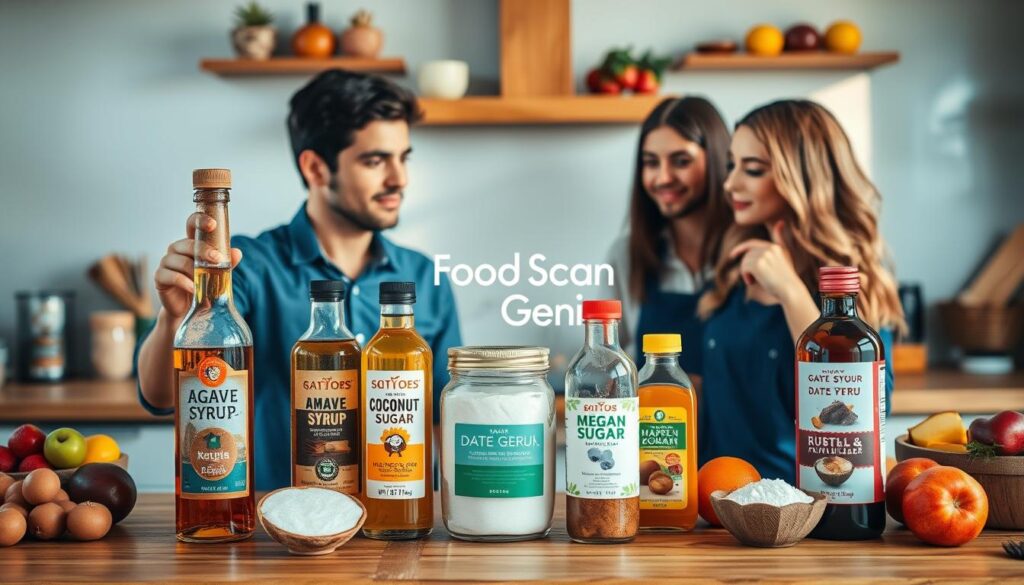
“Women should consume no more than 100 calories per day of added sugar, which is about 6 teaspoons, according to the American Heart Association. Men should consume no more than 150 calories per day of added sugar, which is about 9 teaspoons, as recommended by the American Heart Association.”13
Fats in Vegan Diets
Fats are key to a healthy vegan diet. They help with nutrient absorption and keep you full. It’s important to pick the right fats for a balanced diet.
Healthy Oils to Use
Choose high-quality plant-based oils for your vegan fats. Olive, coconut, and avocado oils are great for cooking and dressings15. They’re full of good fats that lower cholesterol and fight inflammation16. Olive oil, for instance, has about 11 grams of healthy fats per tablespoon15.
Avocados and Their Benefits
Avocados are a vegan superfood. They’re full of healthy fats, fiber, vitamins, and minerals16. Enjoy them on toast, in smoothies, or as a dip. They make you feel full and are very nutritious.
Vegan Butter Substitutes
For vegan baking, use plant-based butter alternatives. Coconut oil, nut butters, and vegan margarine are good choices15. They add richness and creaminess to your baked goods without animal products15.
Not all fats are good for you. Vegans can enjoy healthy fats but avoid saturated and trans fats16. Adding various vegan fats to your diet supports your health and wellness.
Flavor Enhancers and Spices
Spice up your vegan cooking with a vibrant array of herbs, spices, and flavor enhancers! From the savory umami of soy sauce to the smoky depth of smoked paprika, these ingredients can transform your plant-based dishes into culinary masterpieces17. Whether you’re craving classic Indian flavors or seeking a touch of Middle Eastern flair, the right blend of vegan seasonings can help recreate the authentic taste profiles you love17.
Essential Herbs and Spices
Start with the essentials – garlic powder, onion powder, cumin, and turmeric17. These versatile seasonings can add depth and complexity to a wide range of vegan dishes. Experiment with fresh herbs like basil, cilantro, and ginger to brighten up your meals17. For a savory umami boost, consider incorporating soy sauce or liquid smoke17.
Mastering Vegan Flavor
Nutritional yeast is a vegan secret weapon, providing a cheesy, nutty flavor that can elevate your dishes17. Smoked paprika is another must-have, imparting a rich, smoky essence that mimics the taste of traditional meat-based recipes17. And don’t forget the power of black salt, or kala namak, which can replicate the flavor of eggs in vegan cooking17.
Experiment with different flavor combinations and don’t be afraid to get creative18. By incorporating a variety of vegan seasonings, you can elevate the taste and texture of your plant-based dishes, making them truly irresistible18.
Spice up your vegan cooking with a vibrant array of herbs, spices, and flavor enhancers!
| Vegan Seasoning | Flavor Profile | Culinary Applications |
|---|---|---|
| Turmeric | Earthy, slightly bitter | Indian and Middle Eastern dishes, anti-inflammatory properties17 |
| Nutritional Yeast | Cheesy, nutty | Sauces, dips, and cheese substitutes, rich in B vitamins and protein17 |
| Black Salt (Kala Namak) | Sulfurous, egg-like | Vegan egg dishes, recreating the flavor of traditional eggs17 |
| Soy Sauce | Umami, savory | Marinades, stir-fries, and Asian-inspired cuisine17 |
| Cumin | Earthy, nutty | Mexican, Indian, and Middle Eastern dishes17 |
Remember, the key to delicious vegan dishes is a well-stocked pantry of flavorful herbs, spices, and seasoning blends18. By experimenting with these vegan seasonings, you can elevate your plant-based creations and impress your taste buds181917.
Vegan Snacks and Convenience Foods
Feeling a snack attack? No worries! The vegan snack scene is now more exciting than ever. You can find vegan-friendly options for any craving, whether it’s savory, sweet, or quick and easy20.
Popular Vegan Snack Options
For a satisfying crunch, try hummus with veggie sticks or roasted chickpeas. Even Takis, Doritos, and Ritz Crackers are vegan-friendly20. Clif Bars and Nature Valley granola bars are great for a quick snack. For sweet treats, Lindt chocolate, Wheat Thins, and Harvest Snaps are all vegan20.
The vegan market has improved a lot for convenience foods. You can find frozen vegan toaster waffles and mac & cheese, plus pre-made vegan sushi and pizza21. Daiya and Amy’s are making it easy to enjoy comfort foods without animal products21.
Reading Labels for Vegan Ingredients
It’s crucial to read labels carefully with so many options. Watch out for non-vegan ingredients like whey, casein, or gelatin20. The Food Scan Genius app helps you quickly check if a product is vegan20.
With some label knowledge and apps, snacking will be easy and fun. So, go ahead and enjoy that Sour Patch Kids or Fruit Roll-Up. Your vegan snack dreams are now a reality22!
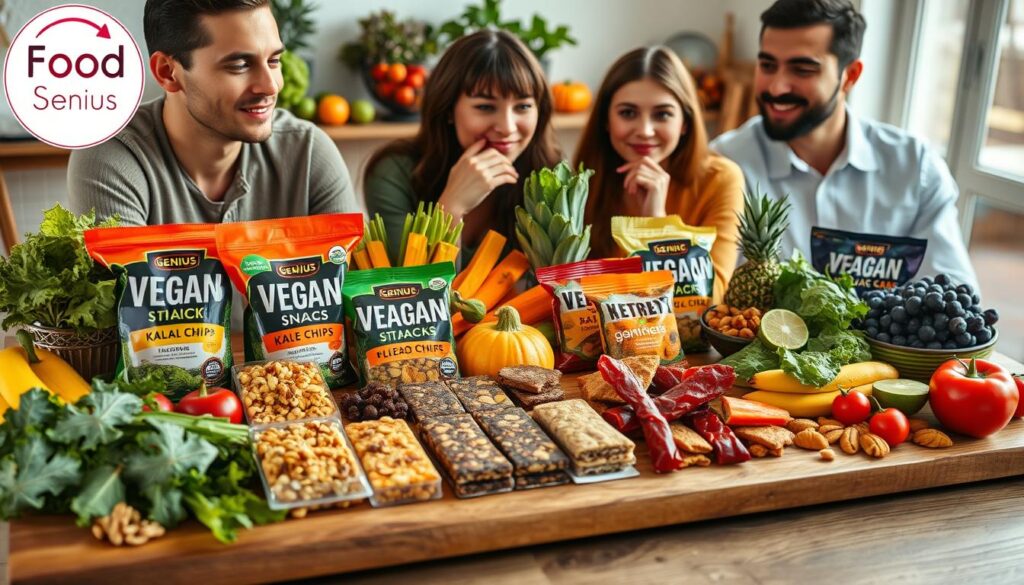
“Vegan snacking has never been easier or more delicious. The options are truly endless!”
Vegan Baking Essentials
Calling all sweet-toothed vegans! Baking without eggs or dairy is easier than you think. With the right ingredients, you’ll make tasty treats quickly23. You can use many flours like semolina and gluten-free ones23. Baking soda and baking powder are also vegan-friendly23.
Cocoa powder adds flavor and color to your baked goods23. Apple cider vinegar is great for recipes needing extra acidity.
Key Vegan Baking Substitutes
24 Mix ground flax seeds with water at a 1:3 ratio for a flax egg substitute24. Chia seeds and water, also at a 1:3 ratio, make a chia egg substitute24. For cornflour, mix 2 tablespoons with 2 tablespoons of water to replace an egg24.
Tapioca flour or arrowroot flour, at a 2:2 ratio, can also substitute for one egg24. Mashed fruits like applesauce or bananas can replace one egg at 1/4 cup24. A mix of 1 teaspoon of baking soda and 1 teaspoon of apple cider vinegar helps baked goods rise24.
Aquafaba, the liquid from cooked chickpeas, can replace egg whites and whole eggs. Use 2 tablespoons for one egg white and 3 tablespoons for a whole egg.
Flours and Binding Agents
25 There are many plant-based flours for vegan baking, like almond and coconut flour25. Xanthan gum, agar agar, or psyllium husk can bind ingredients23. Nut butters are creamy alternatives to dairy butter23.
Non-dairy vegan butter substitutes include almond oil and coconut oil23. Coconut oil and avocados can replace butter in a 1-to-1 ratio, adding healthy fats23.
25 For sweeteners, certified organic sugar is a good choice for vegan baking25. Look for vegan-friendly brands like Pascha Organic and Just Date Organic for your baking needs.
“Vegan baking is all about getting creative and experimenting with new ingredients. With a little practice, you’ll be whipping up delicious, animal-friendly treats in no time!”
Combining Vegan Ingredients
Making a balanced vegan diet is about mixing different healthy foods. You need plant-based proteins, complex carbs, and lots of fruits and veggies in your meals26. To get all the amino acids, mix grains with legumes or eat foods like soy, quinoa, and chia26.
Meal prep helps you eat well without stress. Begin by cooking big batches of brown rice, lentils, and roasted veggies27. Then, mix flavors with turmeric cauliflower, garlic kale, or an avocado-tomato salad27. Keep your pantry full of herbs, spices, and healthy fats to make meals quick and tasty.
Creating Balanced Vegan Meals
- Choose a variety of protein sources like beans, tofu, tempeh, or nut butters.
- Match grains with legumes for a full amino acid mix.
- Fill your plate with colorful fruits and veggies for vitamins, minerals, and antioxidants.
- Add healthy fats from avocado, nuts, seeds, or oils for better nutrient absorption and fullness.
Vegan Meal Prep Tips
- Batch cook whole grains, beans, and roasted veggies for quick meals.
- Chop and store fresh produce for easy salads and stir-fries.
- Prepare sauces, dressings, and dips ahead of time for extra flavor.
- Freeze vegan soups, stews, and curries for fast reheats.
- Have nuts, seeds, and dried fruit ready for quick, nutritious snacks.
With some planning and creativity, you can enjoy healthy, balanced vegan meals every day. Learn to mix ingredients for great taste and nutrition2627.
Eating a varied, plant-based diet is the key to getting all the essential nutrients your body needs as a vegan. It’s all about finding the right combinations.”
Conclusion and Resources
Congratulations on your journey to becoming a vegan ingredient expert! But the learning doesn’t stop here. Explore vegan cookbooks and food blogs for new recipe ideas28. With a 500% increase in vegans in America from 2014 to 201728, now is a great time to join the vegan community.
Further Reading and Recipes
Check out “VegNews” and “The Vegan” magazines, or look at cookbooks like “Thug Kitchen” and “The Vegan 8.” These sources have lots of info, from basic cooking skills to tasty recipes28. The plant-based meat market is also growing fast, from USD 1.6 billion in 2019 to USD 3.5 billion by 202628. This means endless chances for tasty vegan meals.
Engaging with the Vegan Community
Join local vegan groups or online forums to meet others. These places are great for sharing tips, recipes, and experiences29. A study showed 52% of young vegans chose a plant-based diet for health reasons29. Being part of the vegan community keeps you motivated and inspired.
Being vegan is more than just food; it’s a lifestyle that benefits you, animals, and the planet. So, enjoy your plant-based journey! For help with vegan ingredients, try Food Scan Genius, the top AI assistant for shoppers with Food Allergies & Dietary Preferences.
FAQ
What makes an ingredient vegan?
Why is it important to understand vegan ingredients?
What are some common vegan protein sources?
What are some popular whole grains in vegan diets?
How can I incorporate more fruits and vegetables into my vegan diet?
What are some dairy-free milk, cheese, and yogurt alternatives?
What are some common vegan sweeteners?
What are some healthy vegan fats and oils?
How can I add more flavor to my vegan dishes?
How can I find vegan-friendly snacks and convenience foods?
What are some essential vegan baking ingredients?
Source Links
- How To Stock a Vegan Pantry (Full Ingredient List!)
- An Introduction to What Vegans Eat | Yup, it’s Vegan
- The vegan diet
- The 18 Best Protein Sources for Vegans and Vegetarians
- 15 best plant-based protein foods
- Vegan Diet: Foods, Benefits & More
- Plant-based diets: What do vegans eat?
- Complete Plant-Based Diet Grocery List
- A Vegan-Friendly Grocery List for Anyone Going Plant Based
- Our Vegan Staple Ingredients List 2023
- The Ultimate Guide to Dairy Alternatives (US)
- Dairy alternatives: A guide to the best dairy substitutes
- 11 Vegan Sweeteners for Ethical Indulgence
- Sugar, sugar, honey, honey: A guide to sweeteners for plant-based diets
- The 10 Best Plant-Based Sources Of Healthy Fat | Myvegan
- 9 Healthy Vegan Fats To Add To Your Plant-Based Plates | Exploring Vegan
- 22 Seasonings And Spices Every Vegan Should Have On Hand – Tasting Table
- Food Flavoring for Vegans: 5 Ways to Elevate a Vegan Menu
- Flavors and Taste Enhancers
- 38 Accidentally Vegan Snacks You Can Find at Virtually Any Convenience Store
- Easy Vegan Foods: The Definitive Gigantic List
- 36 Accidentally Vegan Snacks You Can Find at Almost Any Grocery Store
- 22 Ingredients Every Vegan Baker Needs To Have – Tasting Table
- Vegan Baking 101 – The Beginner’s Guide to Vegan Baking | The Chestnut Bakery
- 14 Essential Vegan Baking Ingredients
- Complete Protein Combinations for Vegans
- Vegan Food Combining: Healthy Plant-Based Combinations For Vegans
- Foods for Plant-Based Diets: Challenges and Innovations
- What a Vegan Is and Isn’t, Explained

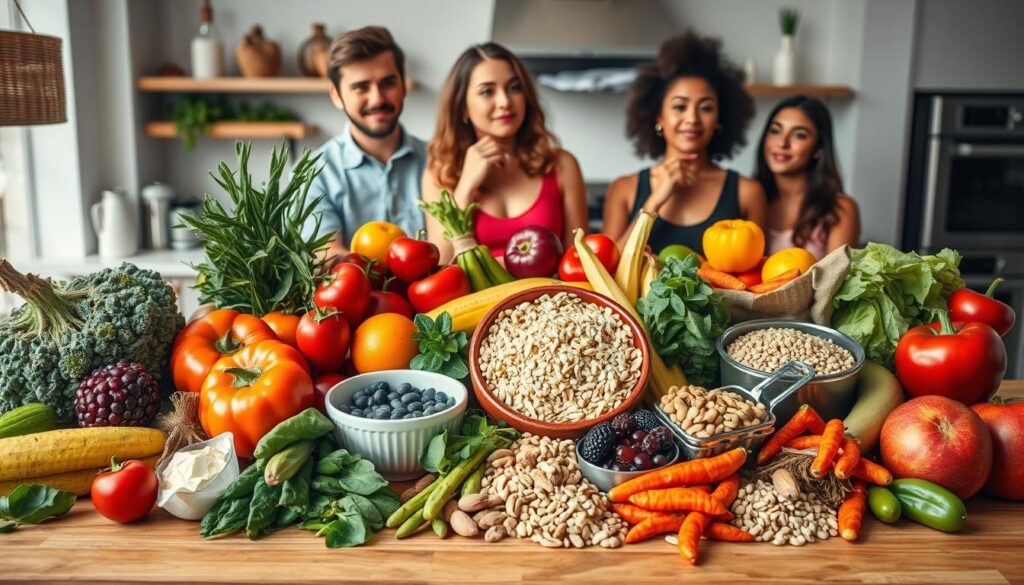
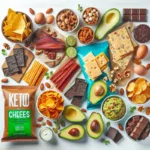
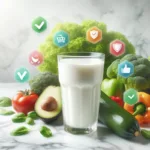


3 Comments
[…] tomatoes represent a cornerstone of vegan pantry staples, offering year-round access to peak-season tomato flavor. Unlike their fresh counterparts, these […]
[…] flour, nutritional yeast, and black salt created a surprisingly eggy flavor. I added spinach, tomatoes, and red onion for […]
[…] Tofu scramble with veggies and nutritional yeast […]